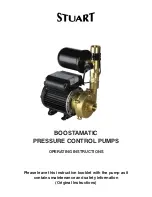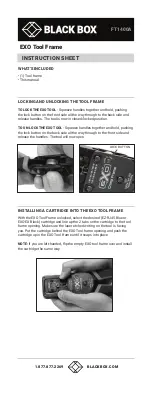
3
3
GENERAL SAFETY RULES
WARNING:
Read all instructions. Failure to
follow all instructions listed below may result in
SAVE THESE INSTRUCTIONS
The term “power tool” in all of the warnings listed
below refers to your mains operated (corded)
power tool or battery operated (cordless) power
tool.
1. WORK AREA SAFETY
1)
Keep your work area clean and well lit.
Cluttered or dark areas invite accidents
2)
Do not operate power tools in explosive
environments, such as in the presence of
create sparks, which may ignite the dust or
fumes.
3)
Keep children and bystanders away while
operating a power tool. Distractions may cause
you to lose control.
2. ELECTRICAL SAFETY
1)
Avoid body contact with grounded surfaces,
such as pipes, radiators, ranges, and
refrigerators. There is an increased risk of
electric shock if your body is grounded.
2)
Power tool plugs must match the outlet. Never
modify the plug in any way. Do not use any
adapter plugs with grounded power tools.
reduce the risk of electric shock.
3)
Do not expose power tools to rain or wet
conditions. Water entering a power tool will
increase the risk of electric shock.
4)
Do not abuse the cord. Never use the cord for
carrying, pulling, or unplugging the power tool.
Keep the cord away from heat, oil, sharp edge,
or moving parts. Damaged or entangled cords
increase the risk of electric shock.
5)
When operating a power tool outdoors, use an
extension cord suitable for outdoor use. Use of
a cord suitable for outdoor use reduces the risk
of electric shock.
6)
If operating a power tool in a damp location
is unavoidable, use a residual current device
(RCD) protected supply. Use of an RCD
reduces the risk of electric shock.
Use the battery only with the charger listed:
BATTERY PACK
CHARGER
DB1840
DC18A
3.PERSONAL SAFETY
1)
Stay alert, watch what you are doing and use
common sense when operating a power tool.
Do not use a power tool while tired or under
A moment of inattention while operating power
tools may result in serious personal injury.
2)
Use safety equipment. Always wear eye
protection. Safety equipment, such as dust
mask, non-skid safety shoes, hard hat, and
hearing protection, when used for appropriate
conditions, will reduce personal injuries.
3)
Avoid accidental starting. Make sure that the
switch is in the “OFF” position before plugging
the tool into an electrical outlet. Carrying
plugging in power tools that have the power
switch “ON” invites accidents.
4)
Remove any adjusting key or wrench before
turning the power tool on. A wrench or key left
attached to a rotating part of the power tool
may result in personal injury.
5)
Do not overreach. Keep proper footing and
balance at all times. This enables better
control of the power tool in unexpected
situations.
6)
Dress properly. Do not wear loose clothing or
jewelry. Keep your hair, clothing, and gloves
away from moving parts. Loose clothes,
jewelry, or long hair can be caught in moving
parts.
7)
If devices are provided for the connection of
dust extraction and collection facilities, make
sure that these are connected and properly
used. Use of these devices can reduce dust-
related hazards.
8)
Use clamps or another practical way to
support and secure the workpiece to a stable
platform. Holding the work by hand or against
your body leaves it unstable and may lead to
loss of control.
9)
Do not use on a ladder or unstable support.
Stable footing on a solid surface enables
better control of the power tool in unexpected
situations.




































